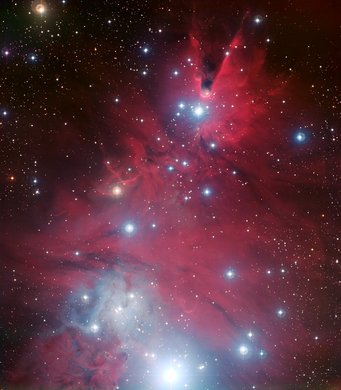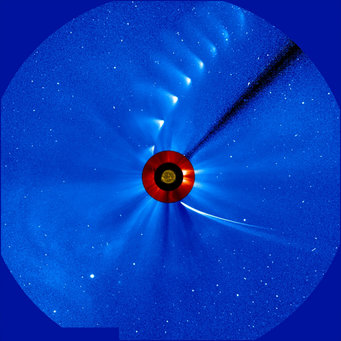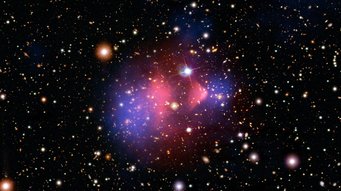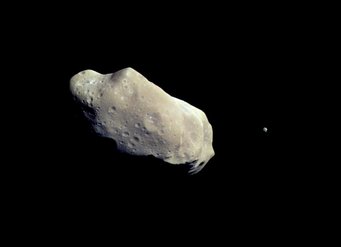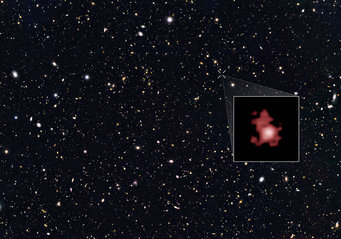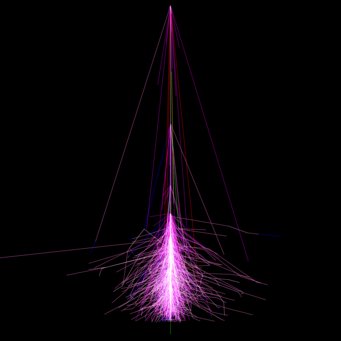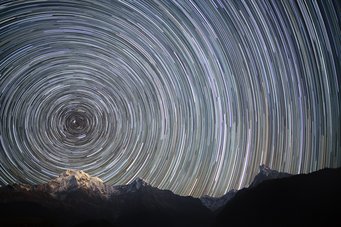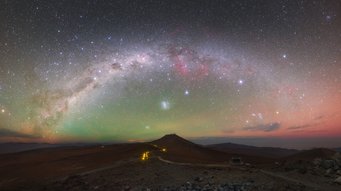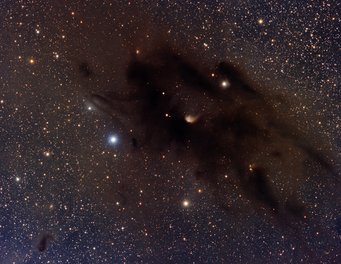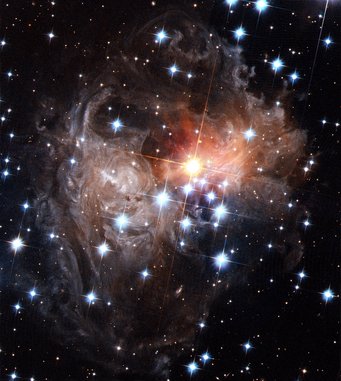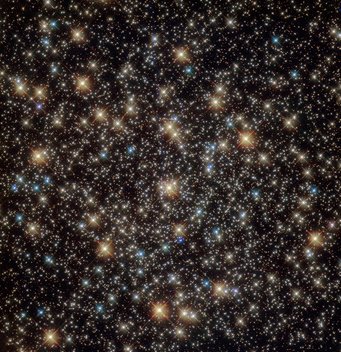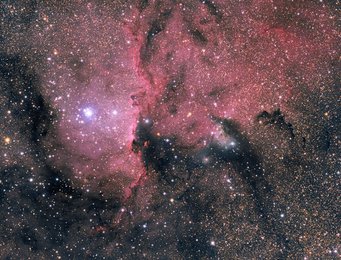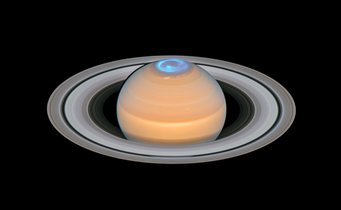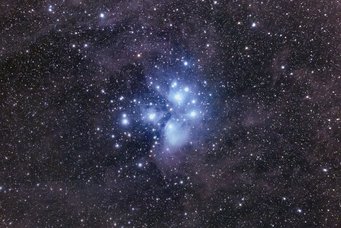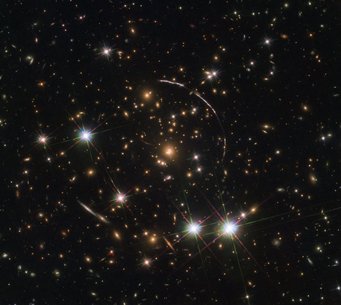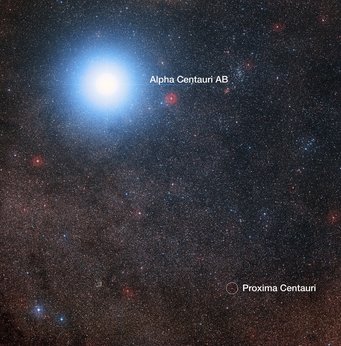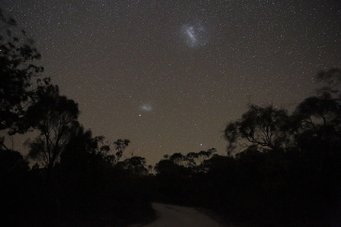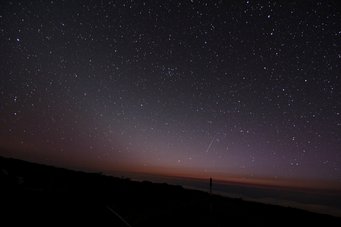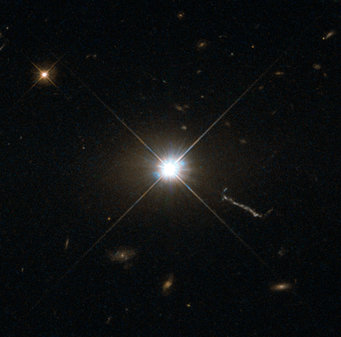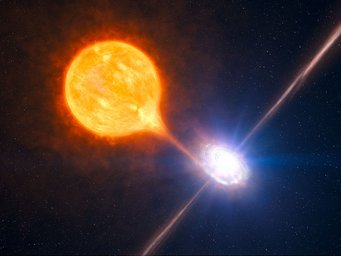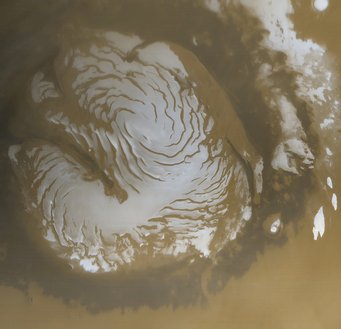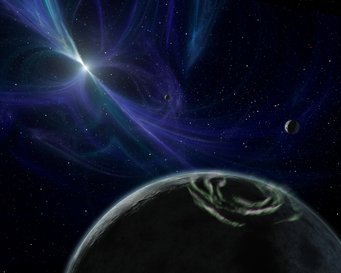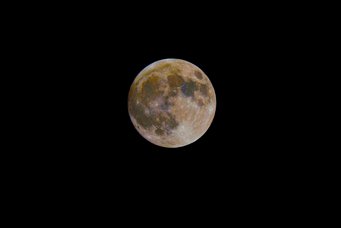The HdA advent calendar 2020
Small bites of astronomy each day - you can also follow them via the hashtag #HdAstroAdvent on our social media!
24 December 2020
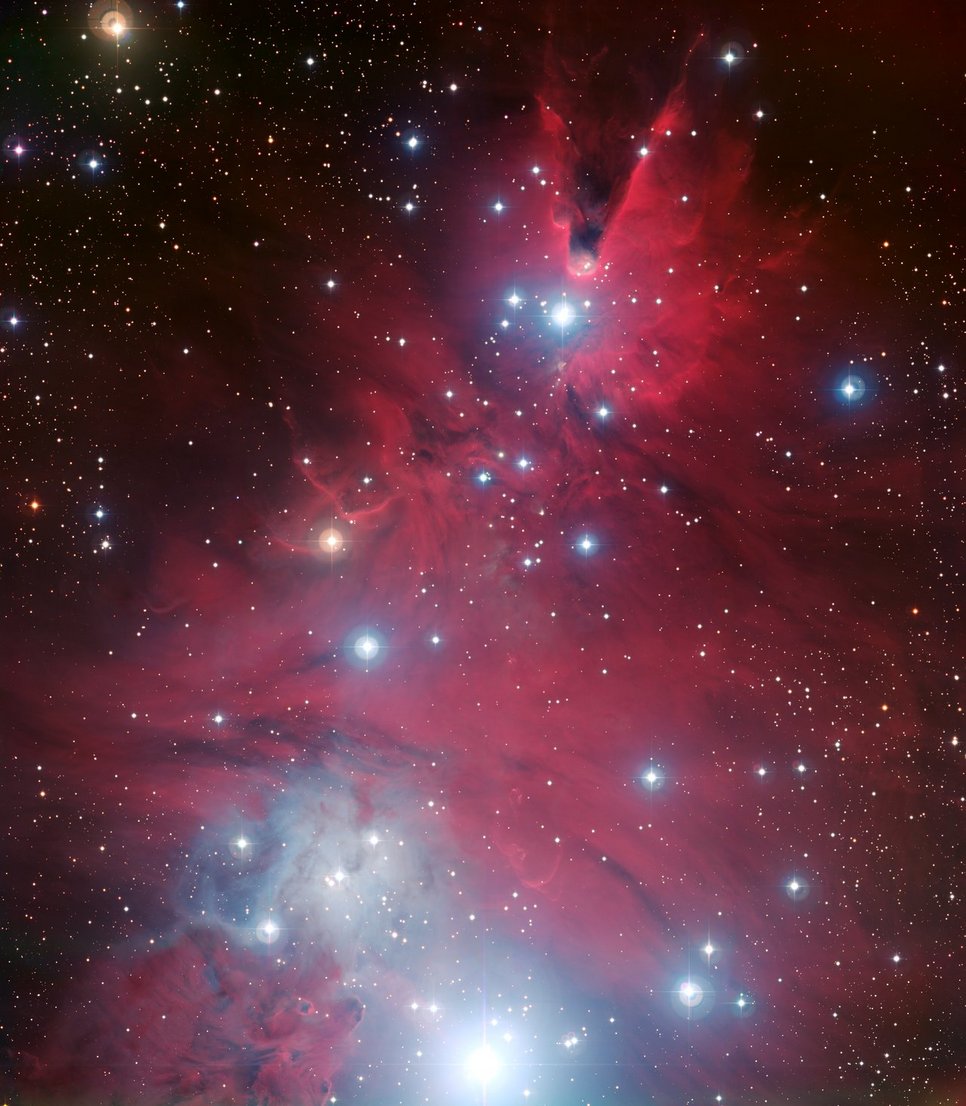
NGC 2264 consists of the Christmas Tree Cluster and the HII region surrounding it. The hot O star S Monocerotis at the base of the tree ionises hydrogen gas, which recombines and then emits the spectral colours typical of hydrogen. At the top of the tree is the Cone Nebula, a wedge-shaped region of condensed molecular gas and dust. In infrared light, this so-called globule glows - inside it, new stars are formed. Over time, the intense UV radiation from S Monocerotis will dissolve large parts of the Cone Nebula, exposing the stars inside. Later, the figure of the Christmas tree will probably also dissolve and the individual stars will diverge.
23 December 2020
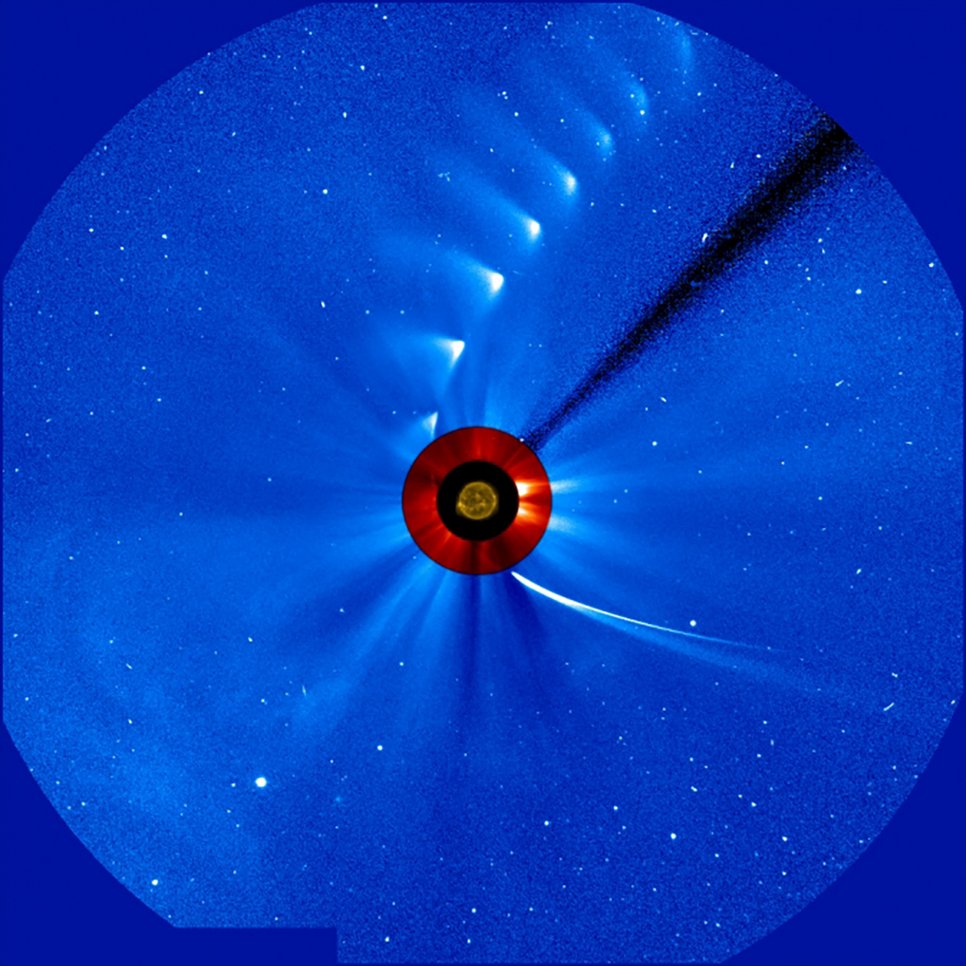
As of today, we know of 4344 comets in our solar system, but this is literally only half the truth, because more comets are regularly discovered in images taken by the SOHO solar probe. Most of the more than 4000 discoveries are so-called sungrazers. The majority of the sungrazers belong to the so-called Kreutz group. They probably go back to a comet observed in 372 and 371 BC. A larger fragment of it returned in 1106 as a daytime comet and broke into many individual fragments. Most sungrazers approach the Sun to such an extent that they do not survive the passage. One recent exception was the Christmas comet C/2011 W3 (Lovejoy) nine years ago.
22 December 2020
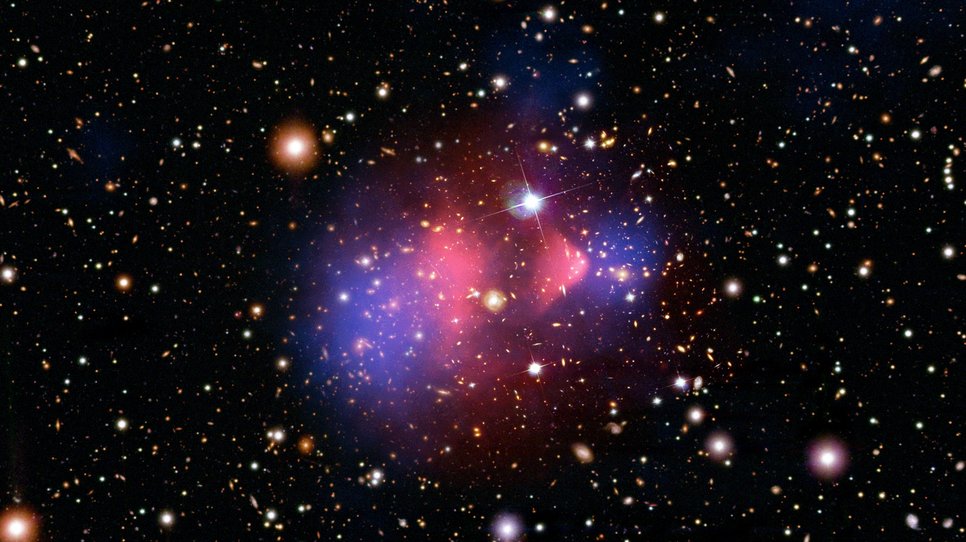
Dark matter does not emit radiation, but can be made visible indirectly. From the image of a galaxy cluster in visible light, the mass of the stars contained in the galaxies can be estimated. X-ray images reveal the hot gas between the galaxies, which contains much more mass than in the stars. Using gravitational lensing, the total mass of the cluster can be determined. When two galaxy clusters collide, as shown here for the so-called Bullet Cluster, the hot gas of the two galaxy clusters (pink) forms shock fronts, while the mass reconstructed via gravitational lensing (blue) went on unhindered after the collision - this is dark matter, which dominates the total mass.
21 December 2020
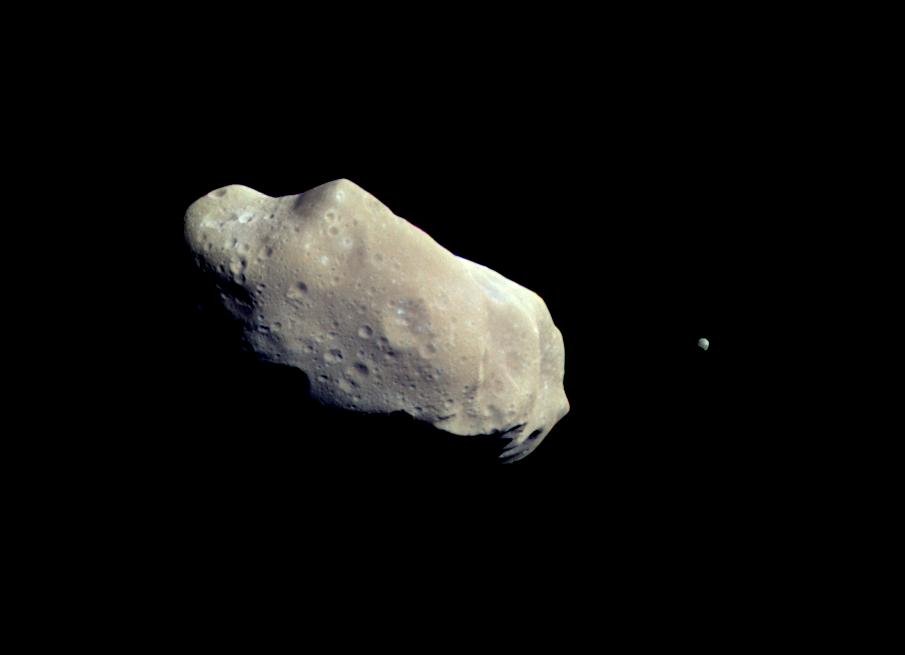
When the spacecraft Galileo passed the asteroid (243) Ida on its way to Jupiter on 28 August 1993, it was found that Ida, about 30 km in size, has a small companion. The moon, about 1.5 km in size, was later named Dactyl. Currently 414 asteroids with at least one companion are known. Asteroid moons are usually discovered as an additional event in stellar occultations or as a transit in the asteroids' light curves; but sometimes they are also discovered during radar measurements of Near-Earth asteroids. If the size difference between the asteroid and the moon is not very large, it is called a binary asteroid. Triple systems are also possible. Asteroid moons were either blown off the parent body during an impact and then entered an orbit around it, or captured by chance .
20 December 2020
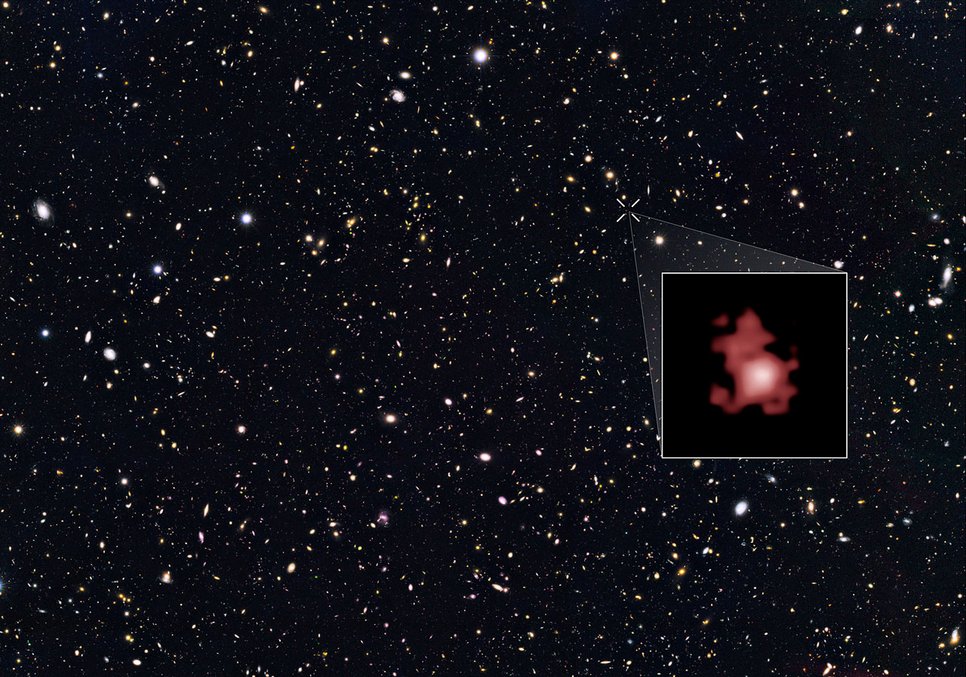
The galaxy GN-z11 the current record holder for the most distant object in the Universe. GN-z11 has a redshift of 11.09, so we see it today as it was 13.4 billion years ago, about 400 million years after the Big Bang. It has only about 1/25 of the size of the Milky Way and only 1% of its mass, but a 20 times higher star formation rate. The existence of galaxies of this size so soon after the formation of the first stars ever raises the as yet unresolved question of how the first galaxies could have formed so quickly after the formation of the Universe .
19 December 2020
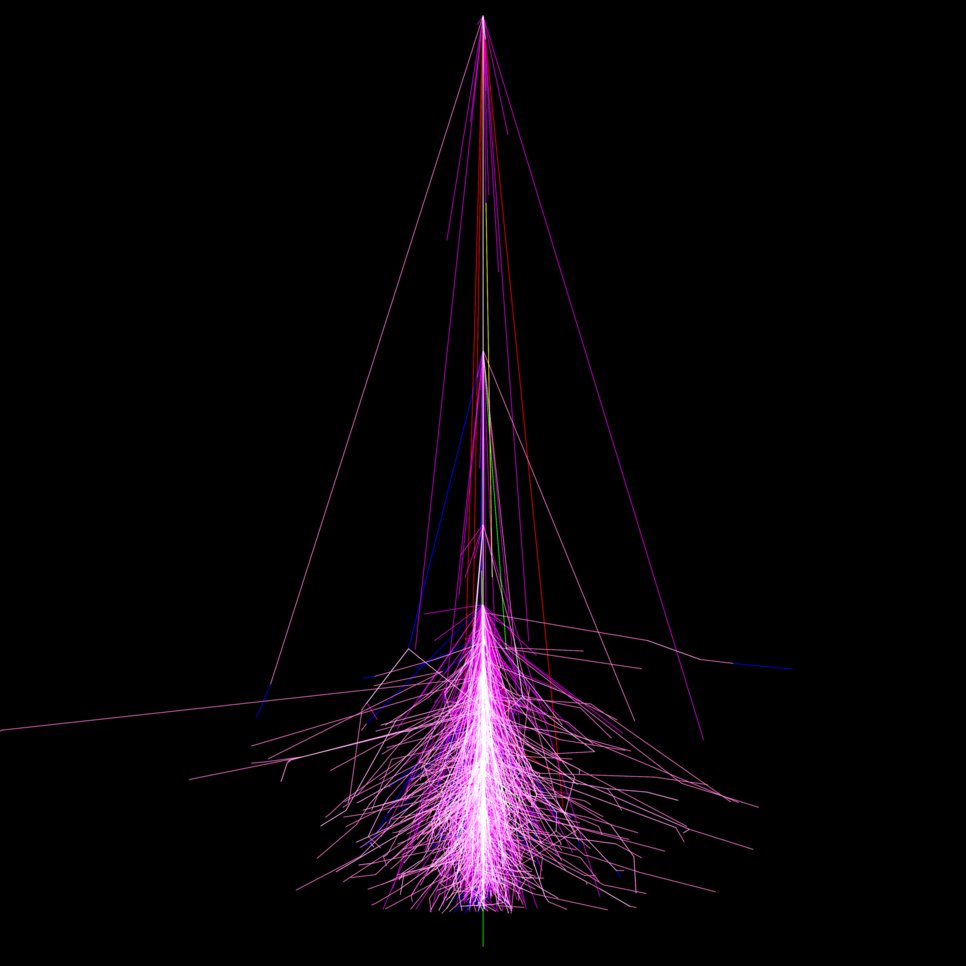
Besides the solar wind, particles reach us also from distant cosmic objects, accelerated for example by supernova explosions or in the jets of black holes. In Earth's atmosphere, they generate air showers. A small fraction of these particle cascades reaches the surface of the Earth and can be detected, for example with scintillation counters. High-energy gamma rays also trigger air showers in Earth's atmosphere, but these are less pronounced. Instead, special telescopes such as MAGIC or the HESS Telescopes observe Cherenkov light, which is generated when the velocities of the particles produced exceed the speed of light in air. In contrast to particles that are deflected by cosmic magnetic fields, the origin of the gamma rays can be determined.
18 December 2020
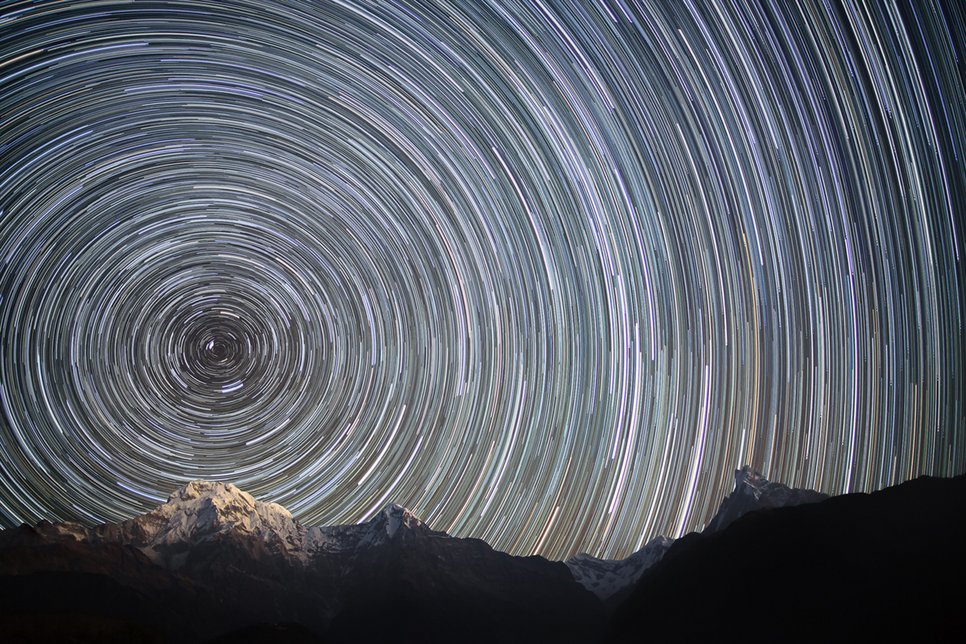
On longer exposed images of the night sky, the actually point-like stars distort into trails due to the Earth's rotation when the camera is stationary. Depending on the focal length of the lens, this effect becomes visible after only a few seconds. If you combine several star trail images taken one after the other over a longer period of time and with wide-angle lenses, nested circles or circle segments are formed. In the northern sky, the North Star, or Polaris, is located about 0.7° from their center. At the moment, the southern sky has no bright star as a guide to the celestial pole, but even in the northern hemisphere this is not always the case. Earth's axis is wobbling, and due to the precession lasting about 26,000 years, in about 12,000 years Vega in the constellation Lyra will be the North Star.
17 December 2020
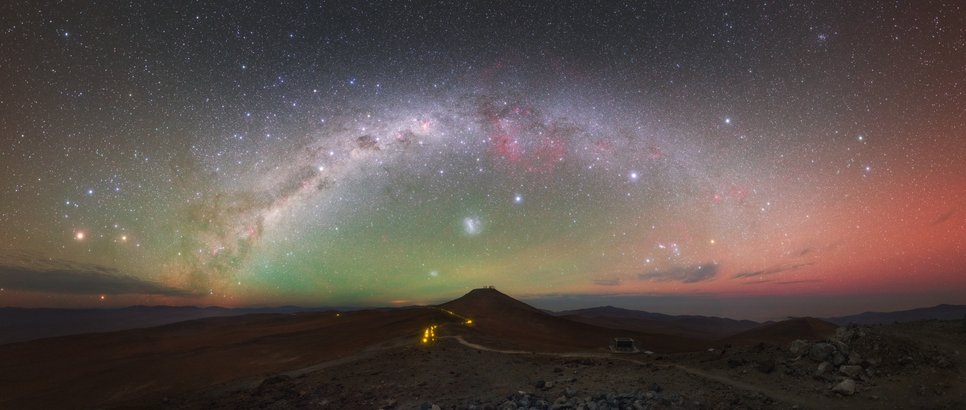
Even in places with little light pollution, the sky background is not completely dark. The faint airglow, visible in striking shades of green and rarer also in red in long-term exposures, brightens the sky. During the day, the Sun's high-energy UV radiation can ionize atoms and dissociate molecules in the outer layers of Earth's atmosphere. Recombination and de-excitation often continue well into the night, so that the faint glow becomes visible in the dark. Since airglow occurs mainly at altitudes of about 90-100 km, it can be observed from Earth orbit as a faint luminous layer of the Earth's atmosphere. The greenish hue is characteristic of atomic oxygen. Red hues originate from hydroxyl radicals and molecular oxygen.
16 December 2020
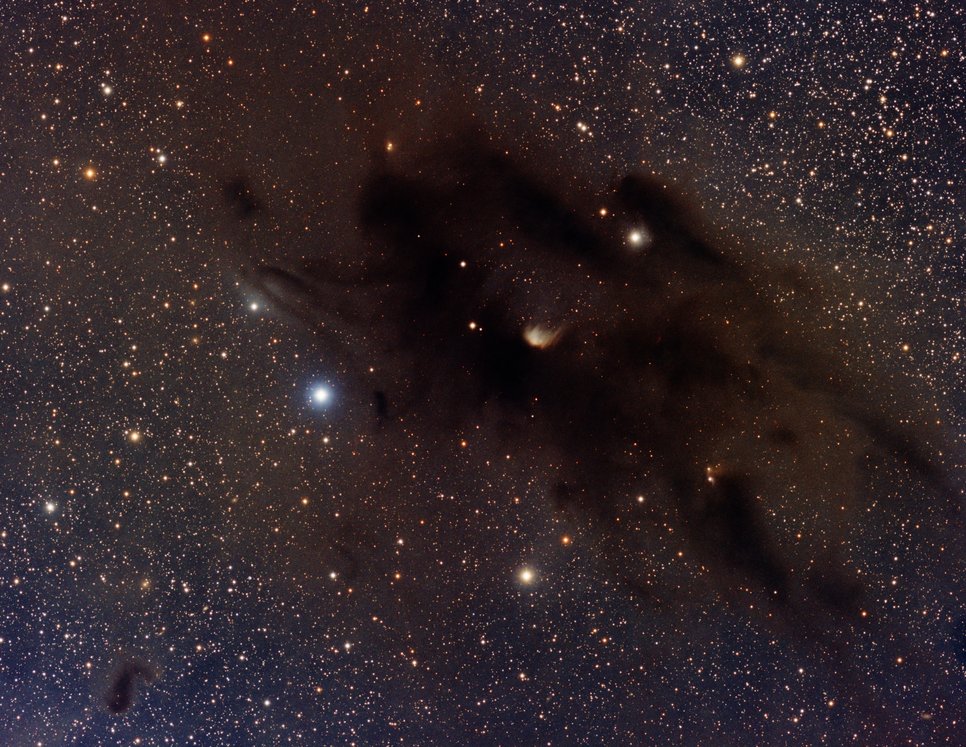
Galaxies like our Milky Way are interspersed by dark dust which absorbs the visible light of the stars behind it. At the same time the light is reddened, because it is also scattered by the dust particles. Blue light is scattered more strongly, so that stars appear redder than they are. Since cosmic dust does not only occur in dense clouds but is everywhere, this affects all stars and galaxies, especially in and near the belt of the Milky Way, and the farther away the stronger. In the near infrared, dust becomes transparent, so you can see what is happening inside the clouds. In the far infrared, or at radio wavelengths, dust can even start to glow itself when heated from within by stars.
15 December 2020
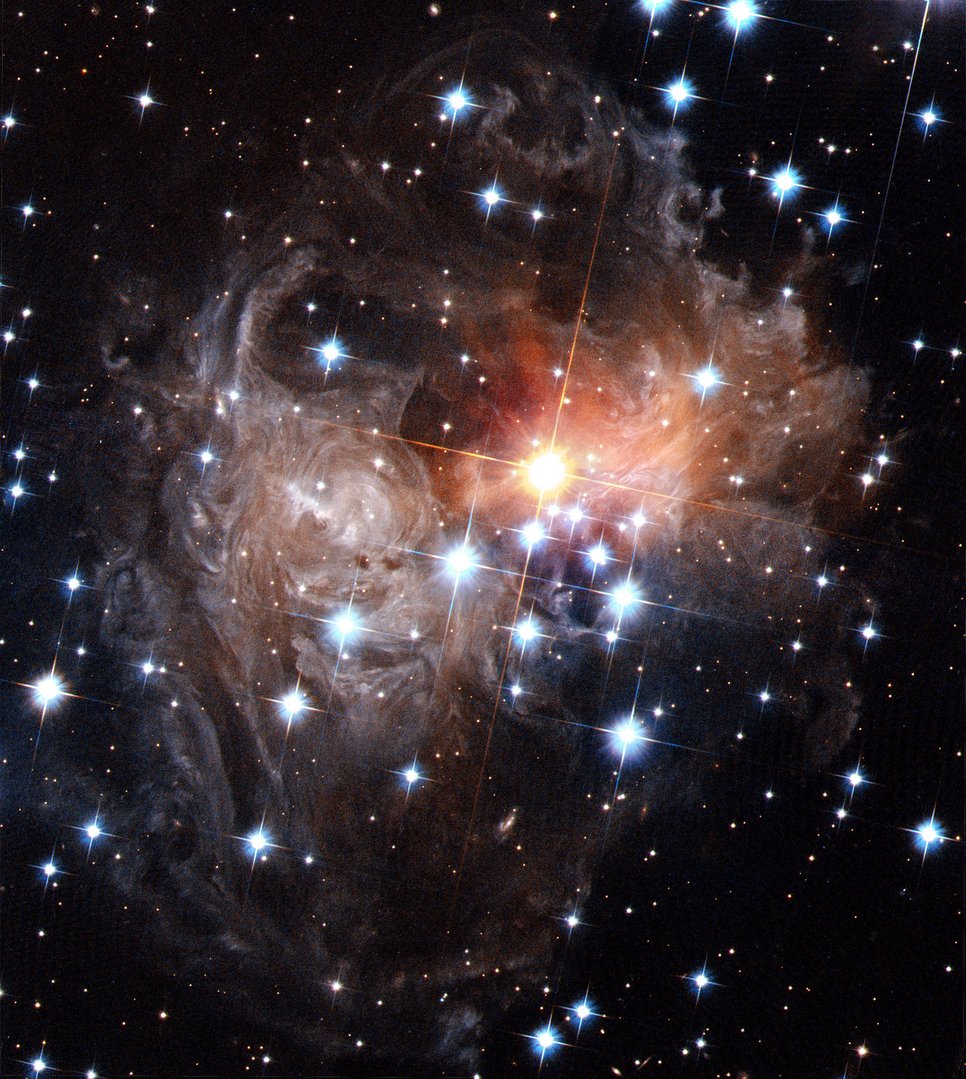
The speed of light is an incredible 299,792 km/s, yet with the help of distant celestial objects that show brief glow and are shrouded in normally invisible dust, it is possible to follow in real time how light propagates as a so-called light echo. Perhaps the most prominent example of a light echo was observed around the star V838 Monocerotis, which had a nova outburst in January 2002: an explosive event where hydrogen that has accumulated on a white dwarf abruptly fuses after being sucked off a companion star. Within the following years (shown here as a time-lapse) one could follow how around the star more and more outer shells became visible - but not because they themselves lit up, but because the light from the nova explosion had reached the dust, which reflected the light to us.
14 December 2020
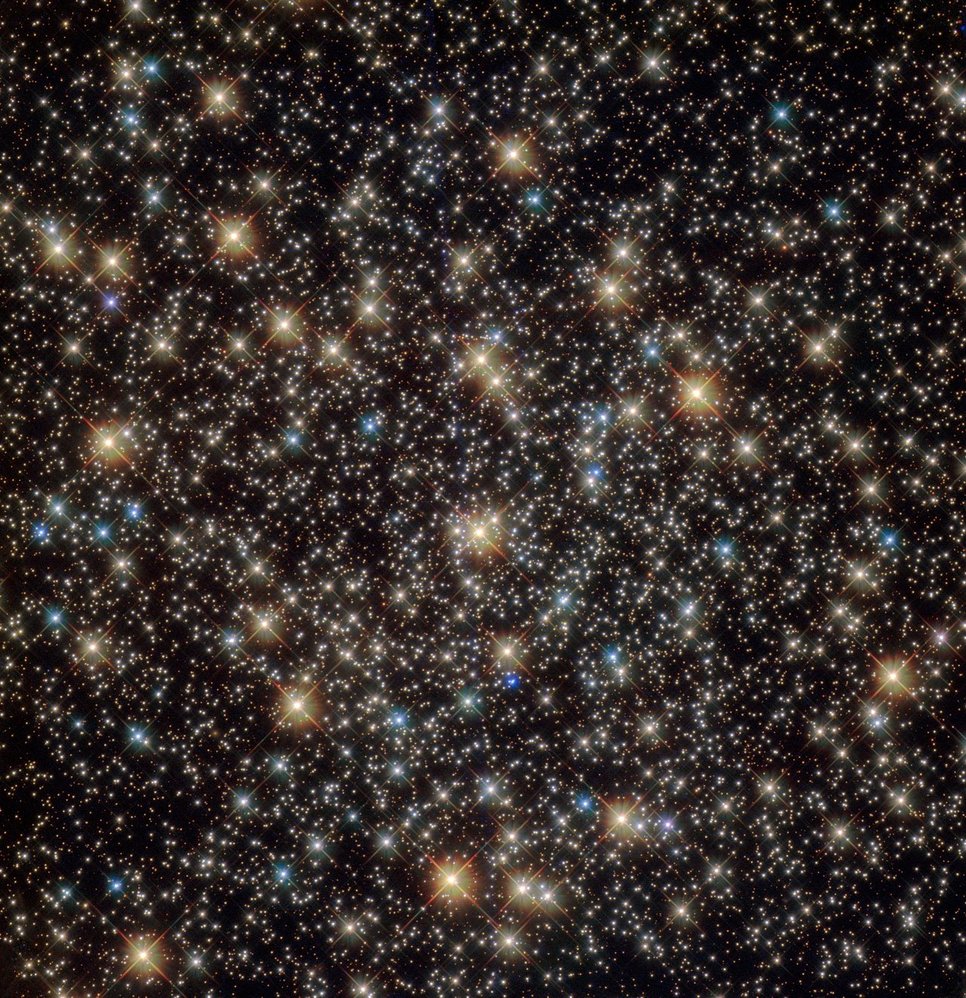
In astronomical images, bright stars often have rays, so-called spikes. They are so typical that stars are stylized with rays and "star-shaped" is synonymous with "with rays". In reality, however, stars are always point-like. Spikes occurr due to diffraction of light at the holding struts of the secondary mirror in reflecting telescopes. Each single strut produces two opposite rays: a one-armed holder thus creates two opposite rays, three holding struts six and four perpendicular ones a superimposed cross. Camera lenses can also produce rays when the light is diffracted at a polygonal aperture. Refracting telescopes do not produce spikes per se. For image aesthetics, astrophotographers sometimes create artificial spikes with strings in front of the telescope.
13 December 2020
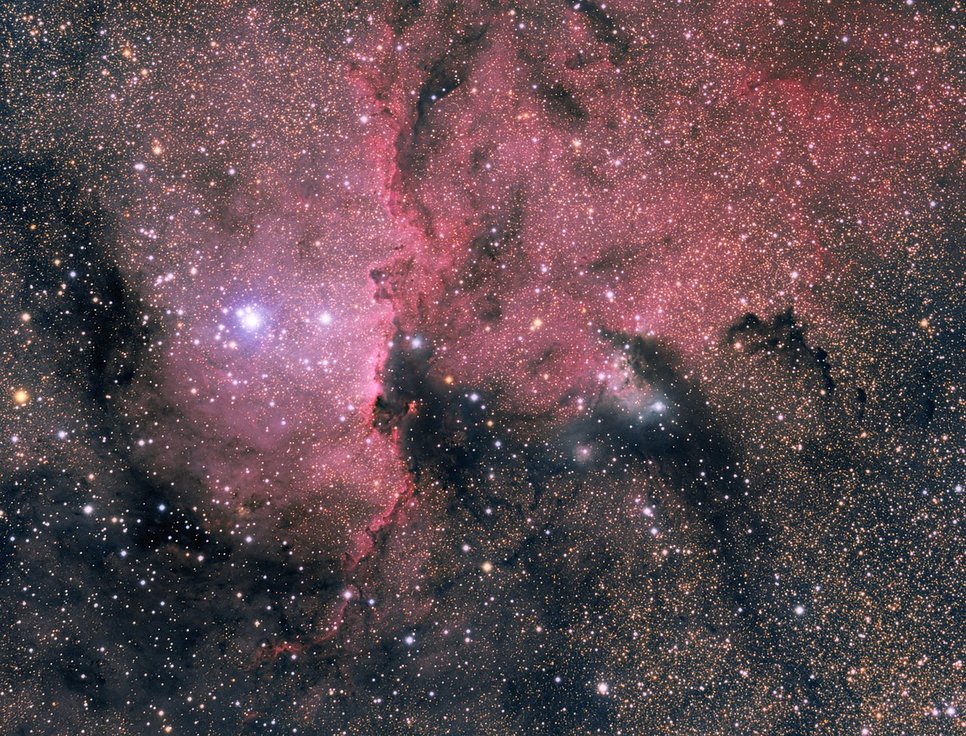
Hydrogen is the most common element in the Universe, by far. Only about every 12th atom belongs to the second most abundant element helium. Accordingly, there are about 85.000 helium atoms per one million hydrogen atoms - sometimes more, sometimes less, depending on how much has already been fusioned in stars. The next most abundant elements are oxygen, carbon, and nitrogen, the main constituents of organic molecules along with hydrogen. They are formed during later stages of stellar evolution. However, there are only a few hundred atoms of them per million hydrogen atoms. Next is the noble gas neon followed by silicon, magnesium and iron, the basic materials of many minerals and rocks of Earth's crust and interior. However, there are less than 50 of these atoms per million hydrogen atoms. Most chemical elements have significantly less than one atom per million hydrogen atoms.
12 December 2020
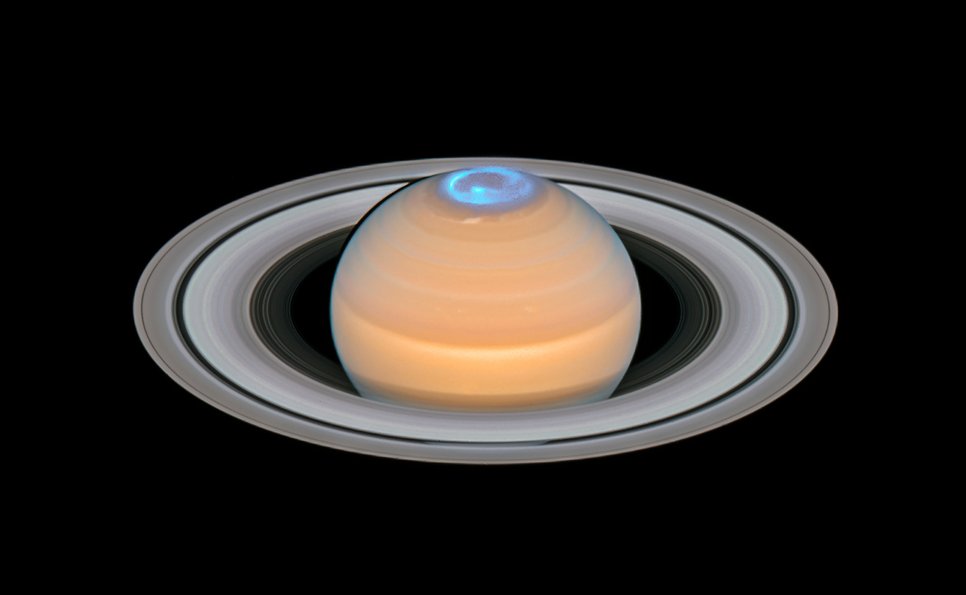
Aurorae are an impressive celestial phenomenon. They occur not only on Earth, but on almost all planets of our solar system. Aurorae can be observed whenever charged particles from the solar wind interact with the magnetosphere of the planet (or in the case of Venus and Mars, only with the atmosphere). Especially on the gas giants, they become visible in ultraviolet light. Jupiter is special: It has a very strong magnetic field and the particles streaming down come primarily from volcanic eruptions on the active moon Io. Jupiter aurorae are therefore visible even in X-rays.
11 December 2020
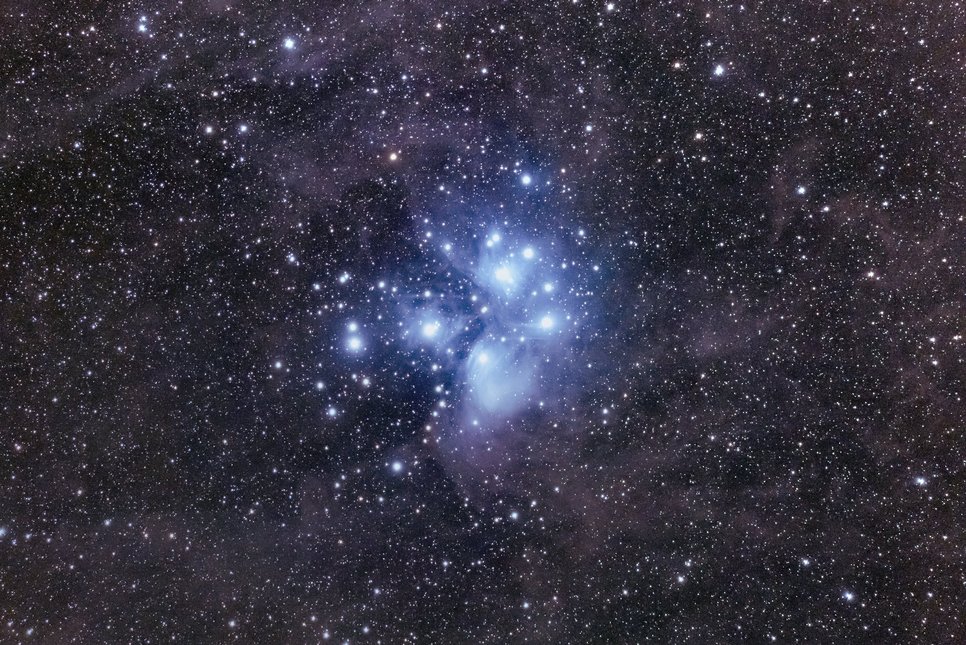
When looking at the winter sky, a group of closely spaced stars not far from the prominent constellation of Orion catches our eyes, which at first glance looks like a mini version of the Big Dipper. The Pleiades are the most famous open cluster. Six to nine stars can be seen with the naked eye, but a total of more than 1000 stars at a distance of about 445 light years are spread over an area in the sky almost four full Moon diameters in size. The roughly 100 million year old star cluster is currently passing through an interstellar dust cloud, which becomes visible on images with long exposure times as blueish nebulae around the brightest stars, whose light is reflected by the dust particles.
10 December 2020
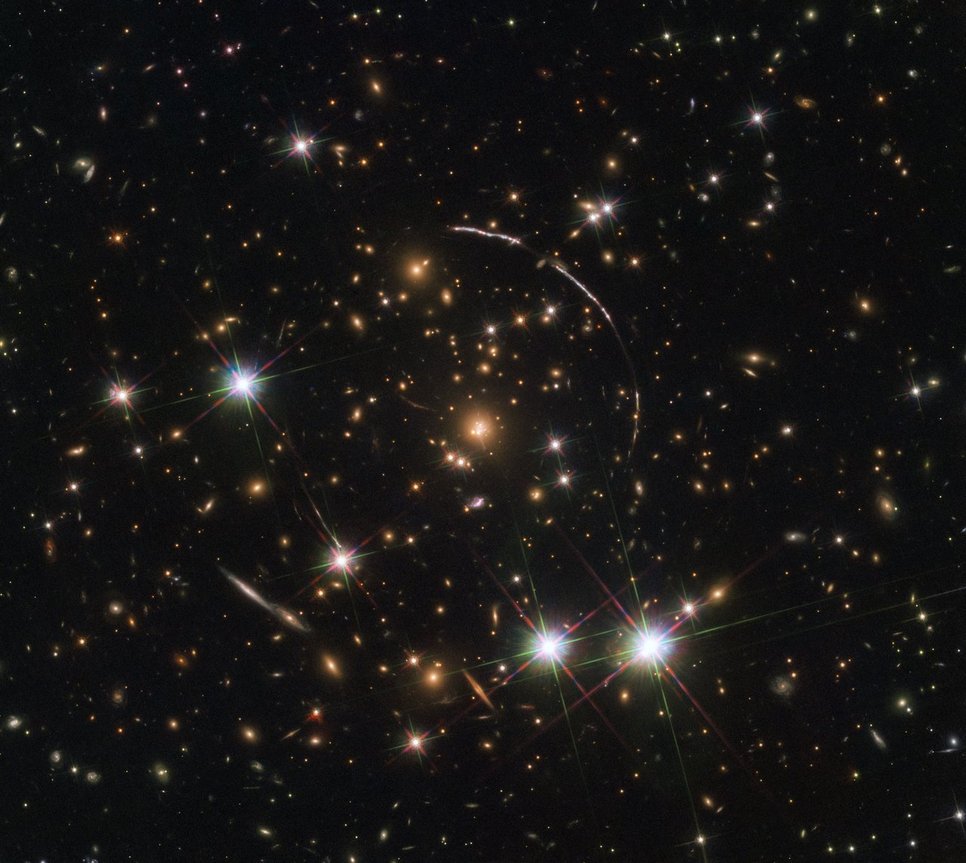
Mass bends space-time and thus also the path taken by light. Large accumulations of mass like entire galaxies or even galaxy clusters therefore distort the image of galaxies behind them to arcs. If the background object, the foreground mass acting as a gravitational lens and we as observers are exactly on a line, short circle segments become a closed ring, which is called an Einstein ring. A special case is the Einstein cross: It occurs if the gravitational lens is elongated and the background object has a slight offset. The background object then appears several times, and four images are arranged as a cross.
9 December 2020
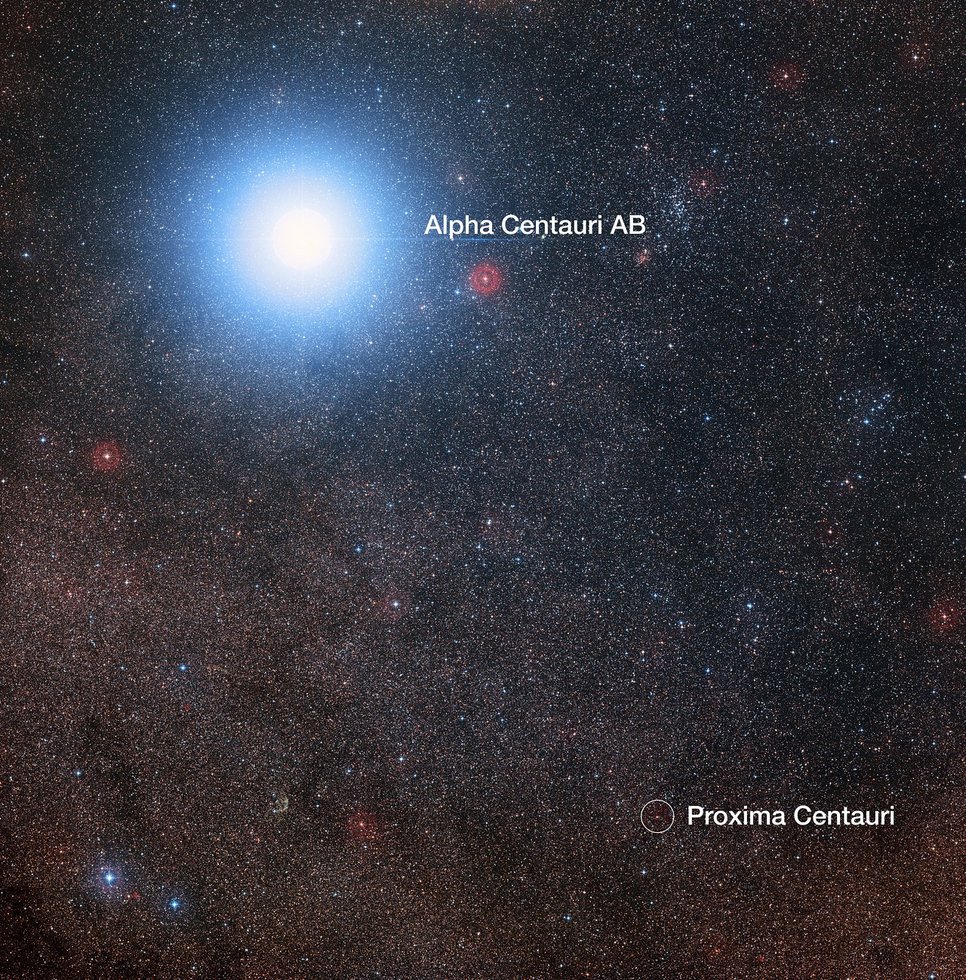
Proxima Centauri is 4.244 light years away from Earth and our closest stellar neighbour. It it orbits the binary star alpha Centauri A and B, but completing one round trip takes more than 500,000 years. While alpha Centauri is the fourth brightest star in the night sky, you need a telescope to see its companion at all. Proxima Centauri is a red dwarf star. Its size is about 15% of the Sun's diameter; its brightness corresponds to about 1 per mille of the Sun's luminosity. Red dwarfs like Proxima are the most common type of star in the universe, but none of them is visible to the naked eye. Instead, the constellations are dominated by extremely bright but much more distant blue stars, which are actually very rare.
8 December 2020

If you cut an iron meteorite, polish the cut surface and etch it with acid, Widmanstätten patterns often become visible: net-like structures that overlap at certain angles to form an irregular geometric pattern. The structures reflect the different nickel content of the alloys kamacite and taenite, which make up the meteorite material. Kamacite, which is poor in nickel, only forms at temperatures below the melting point and within millions of years of cooling. Due to the long crystallization period, kamacite is found exclusively in meteorites. Macroscopic Widmanstätten patterns cannot be produced artificially and are therefore a unique indicator of meteoritic iron.
7 December 2020
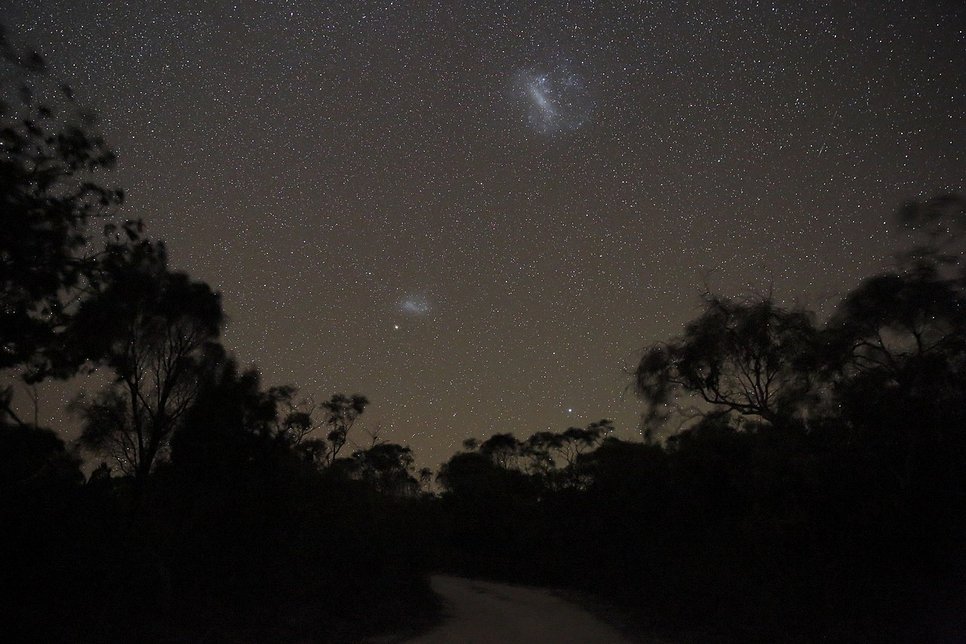
The Large and the Small Magellanic Cloud are two companion galaxies of our Milky Way. They are located in the southern sky and under good observing conditions they are easily visible to the naked eye as diffuse glow. The Large Magellanic Cloud is about 163,000 light years away from us and is the largest of the more than 50 known companions of our Milky Way. The Small Magellanic Cloud is a little further away at just under 206,000 light-years. Both Magellanic Clouds are irregular dwarf galaxies. Our Milky Way, the Andromeda Galaxy, the Triangulum Galaxy and their countless small companions form the so-called Local Group of galaxies, which in turn is part of the much larger Virgo Supercluster, which contains up to 2000 galaxies.
6 December 2020
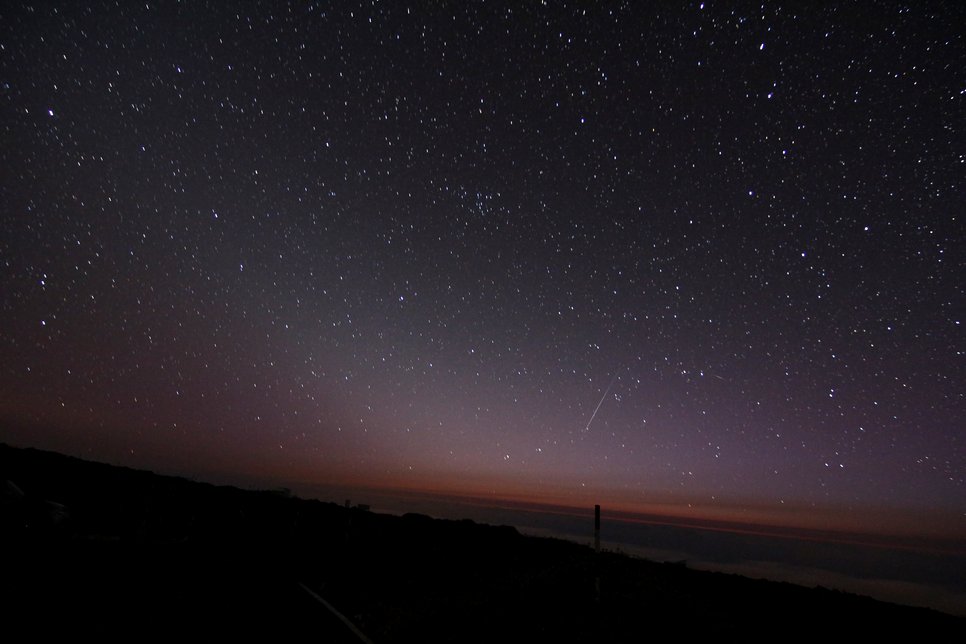
The orbits of the planets in our solar system all lie approximately in the same plane - the ecliptic. However, the space between the planets is not completely empty. Besides asteroids and comets, there are also many small dust particles. They scatter sunlight, which can be seen as zodiacal light along the ecliptic under good observing conditions, i.e. far away from city lights and when the sky is particularly clear. Often it appears only as a wedge-shaped faint glow above the horizon. Opposite the Sun, the dust particles gather at the Lagrange point L2 and therefore become visible as a diffuse counterglow under ideal conditions, the so-called gegenschein.
5 December 2020
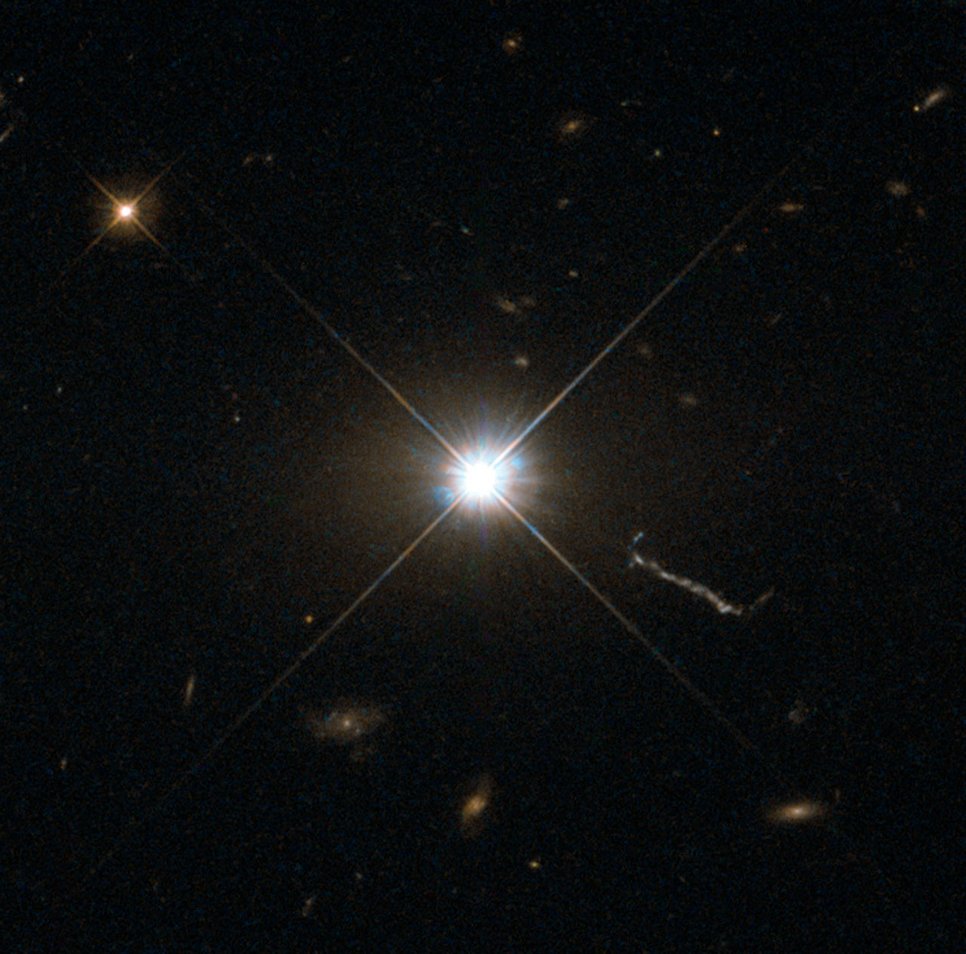
What at first glance looks like a bright star is actually more than 2 billion light years away from us and several hundred times brighter than the Milky Way galaxy as a whole - so the radio source 3C 273 cannot be a star. Instead, such "quasi-stellar" objects - or quasars in short - are the extremely luminous central regions of an active galaxy, where a supermassive black hole surrounded by a disk of heated material is located. 3C 273 is the brightest quasar in the sky and can already be seen with a medium-sized amateur telescope. To make the galaxy visible in which it is embedded, the quasar itself must be masked with a coronograph .
4 December 2020
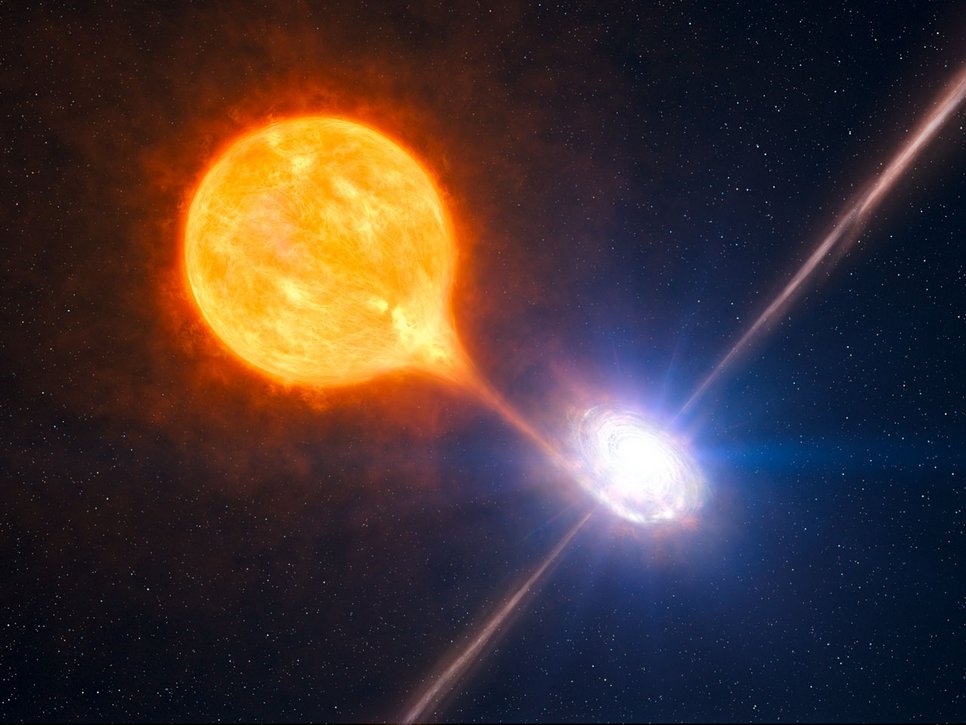
When stars in a binary system reach the end of their life, the more massive of the two stars first evolves into a giant star and then either into a white dwarf, a neutron star or a black hole. If the companion star has meanwhile evolved into a giant star as well from which matter can flow to the compact object, or if the companion is very massive and emits strong stellar winds, this material accumulates in an accretion disk around the compact object. In this process, large amounts of energy are released in the form of X-rays, which is why binary stars like these are called X-ray binaries. The two components can be characterized further by looking into the properties of the X-ray radiation.
3 December 2020

Just like Earth, Mars has polar caps that are covered by a permanent ice sheet. The northern one is the larger of the two polar caps and has a diameter of about 1000 km. The southern polar cap is asymmetrical and with a diameter of 400 km significantly smaller. Both ice caps shwo deep incisions. The northern polar cap therefore resembles a fingerprint and the southern one a fjord-like landscape. In contrast to Earth, we are not only dealing with water ice on Mars, but also with dry ice, i.e. frozen carbon dioxide, which evaporates (more precisely: sublimates) and freezes out again in the course of the Martian seasons. The polar caps then grow significantly compared to their original size.
2 December 2020
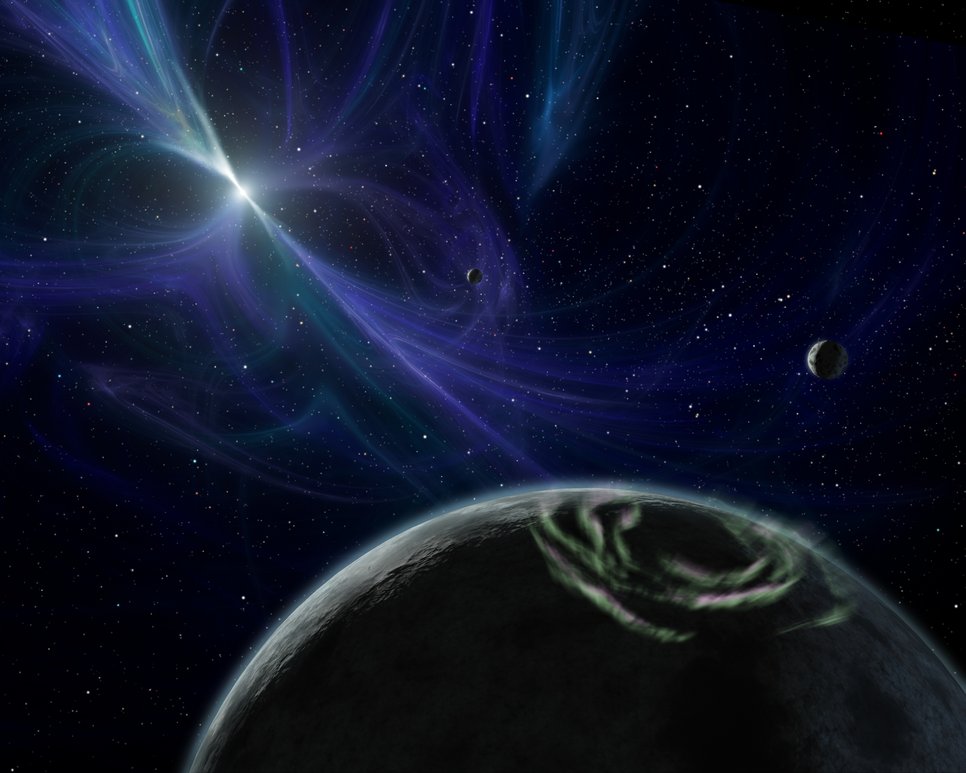
To honor the Arecibo telescope that was destroyed yesterday, we celebrate one of its greatest discoveries today: the planets discovered around the pulsar PSR B1257+ 12 in 1992 by Aleksander Wolszczan and Dale Frail. Pulsars are rapidly rotating neutron stars. Their radiation is very focussed and strikes the Earth regularly, like the beam of a lighthouse. When pulsars are surrounded by planets, their signals show measurable shifts. Both the pulsar and the planet move around their common center of gravity and the pulsar's radiation therefore has to travel sometimes more, sometimes less distance to us. Since neutron stars are one of the final stages of stellar evolution and it's unclear if their planets already existed before the supernova explosion that formed them, their planets are often omitted. That's why 51 Pegasi b is considered the first confirmed exoplanet today.
1 December 2020
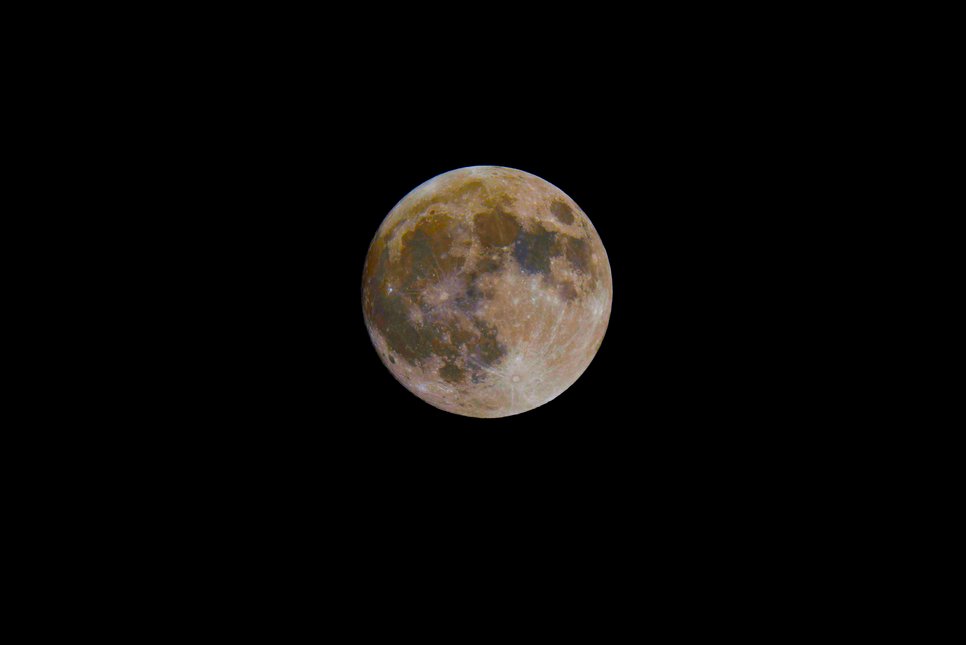
The Moon is colourful! Admittedly, you have to enhance the colours like in this picture to actually see it, but different areas on the surface of the Moon actually have slightly different colours. The colour deviations are caused by the reflectivity of the Moon rocks and their different chemical compositions. The metal content of the volcanic rock, especially iron and titanium, is crucial here. When you look closer, an image with normal colour contrast already shows slight colour deviations in the darker areas. Nevertheless, the strongest influence on the colour of the Moon as we see it, is Earth's atmosphere. For example, near the horizon, the Moon often appears in orange.
